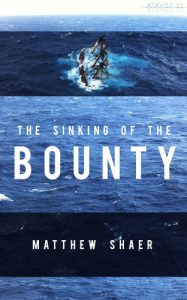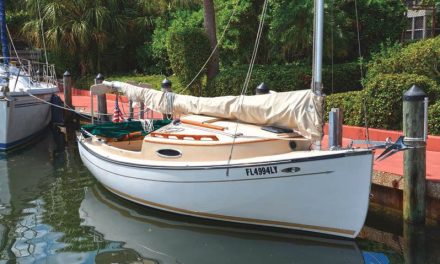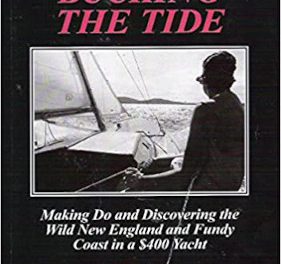
Journalist and writer Matthew Shaer offers a short but interesting and well-written account of the 2012 loss of the Bounty, a replica of the British vessel of the same name whose crew famously mutinied in 1789. In what is now considered a most controversial decision, Bounty’s veteran captain, Robin Walbridge, took Bounty to sea from New London, Connecticut, on October 25, just as Hurricane Sandy was drifting northward off the east coast of Florida. New London’s crowded port, thought Walbridge, would give Bounty no “sea room.” Therefore, adhering to the old adage “Always safer at sea than at anchor,” he sailed southeast to put Bounty windward of the slow-moving Sandy, which he and his crew all assumed would be turning landward around North Carolina. Four days later, Bounty was at the bottom of the Atlantic, Walbridge and one crew member were dead, and the other fourteen were in Coast Guard helicopters on their way to Elizabeth City, North Carolina.
Shaer constructs his tale around brief stories of the crew: Josh Sconavacchi, 25, an adventurer and one of three who twice climbed the foremast in the midst of the hurricane to furl the ripped forecourse (the lowest sail on the foremast); Chris Barksdale, the ship’s engineer who struggled with the failing bilge pumps; Doug Faunt, a retired computer engineer and volunteer crew member; and Claudene Christian, who perished in the Atlantic with the captain and who had long been told she was a descendent of Fletcher Christian, leader of the 1789 mutiny on the original Bounty. It’s a tale of chutzpah and imprudent seamanship, of a captain whose bravado lost his ship and almost lost the crew who trusted him implicitly.
He also addresses whether the Bounty should even have been taken to sea. Crewman Faunt described her as “very much a work in progress,” a ship in subpar condition with dry rot throughout her framing and very-much-deferred maintenance. The HMS Bounty Foundation and Bounty’s owner, Robert Hansen, seemed unable to provide the funds necessary to keep her in good repair and the captain misjudged or ignored how badly degraded she was. But Walbridge was experienced. He’d taken Bounty through gales before. John Svendsen, the 41-year-old first mate, said of the captain: “I never witnessed Robin seeking out a storm. If there was a storm, he would put the ship in the safest position.” Walbridge’s plan to put Bounty in the hurricane’s southeast quadrant was theoretically correct but, in terms of Sandy — 1,000 miles across — dead wrong. He sailed Bounty directly into the maw of the hurricane. Much of the story, with Coast Guard videos embedded in the eBook, is of the rescue itself and the harrowing experiences of the crew. And it is well told, indeed.
Unfortunately, Shaer’s tale suffers from a glaring geographical error. In dealing with Bounty’s itinerary, in Chapter 2, the author notes that Bounty left Connecticut bound for Florida with a mid-November ETA, which allowed for making a tour appointment in St. Petersburg and “a pit stop in Key West for the crew.” Does this sound a little odd? Then, “Bounty would sail around the tip of Florida, across the Gulf of Mexico, and into Galveston, Texas, where she’d put up for the winter.” What happened to St. Petersburg? Where is St. Petersburg? Surely, I thought as I read this, Shaer doesn’t think St. Petersburg is between Connecticut and Key West! But, alas, he apparently does, for in Chapter 5, in describing Walbridge’s pinpointing Bounty’s position on the map on October 27 and then turning southwest toward the hurricane, Shaer writes: “Walbridge reasoned that … Bounty had made it out far enough beyond Sandy’s eye that if he steered inland again, the winds shipping counterclockwise out along the margins of the storm would help propel the ship to St. Petersburg.” When an author makes such a basic error, readers ought to wonder about the author’s overall reliability. And this is a shame, because the story of the Bounty is a good one.
The Sinking of the Bounty by Matthew Shaer (“The Atavist,” Issue No. 22, February 2013)





